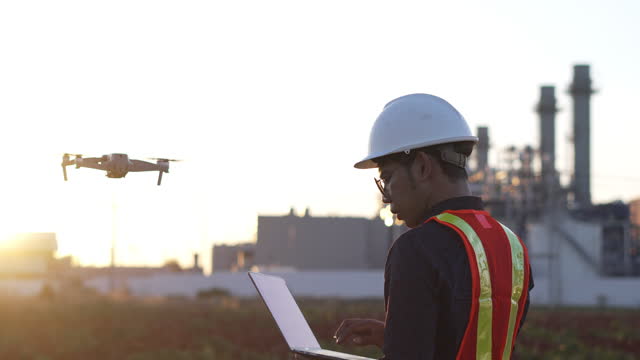How do drone inspections improve safety in hazardous environments?
As of late, mechanical progressions have reformed different ventures, and one striking development having a massive effect is the utilization of robots for examinations in dangerous conditions. Drone technology has emerged as a game-changer in promoting safety, but traditional methods of inspecting such environments frequently involve exposing workers to potential risks. Utilizing advanced drone technology, drone inspection processes become faster, cost-effective, and yield accurate results, optimizing overall infrastructure maintenance. This article looks at how drone inspections help make dangerous environments safer.
The ability to gain access to difficult or dangerous areas without putting human lives at risk is one of the main benefits of using drones in dangerous environments. Drones are able to maneuver through tight spaces, high altitudes, and toxic-laden areas when inspecting nuclear, chemical, or oil rig facilities. Companies can significantly reduce the risk of accidents and injuries that may occur when humans perform such tasks by using drones for inspections.
Besides, drone examinations give ongoing information and high-goal pictures, taking into consideration a complete and exact evaluation of the climate. When it comes to spotting potential flaws or problems that could jeopardize safety, this capability is especially important. Drones furnished with cutting edge sensors and cameras can catch definite pictures and recordings, empowering examiners to break down the state of hardware, foundation, or offices from a distance. This not only makes inspections more effective but also makes it less necessary for employees to physically enter dangerous areas.

Furthermore, the utilization of robots for reviews in unsafe conditions upgrades the speed and recurrence of appraisals. Customary strategies frequently require closures or stops in activities to direct reviews, prompting personal time and monetary misfortunes. On the other hand, drones can quickly carry out inspections, minimizing disruptions to ongoing activities. Ordinary and opportune assessments additionally empower organizations to distinguish and address potential security issues before they raise, at last forestalling mishaps and guaranteeing the continuous honesty of basic framework.
In conclusion, the use of drone technology for hazardous environment inspections represents a significant advancement in safety assurance. Drones contribute to a safer workplace by mitigating risks, providing real-time data, and facilitating quick and frequent assessments. As ventures keep on embracing this imaginative arrangement, the potential for forestalling mishaps and safeguarding human lives in perilous conditions turns out to be progressively substantial. The drone inspection ensures safety by accessing difficult-to-reach areas, reducing human risk and enhancing the reliability of assessments.



